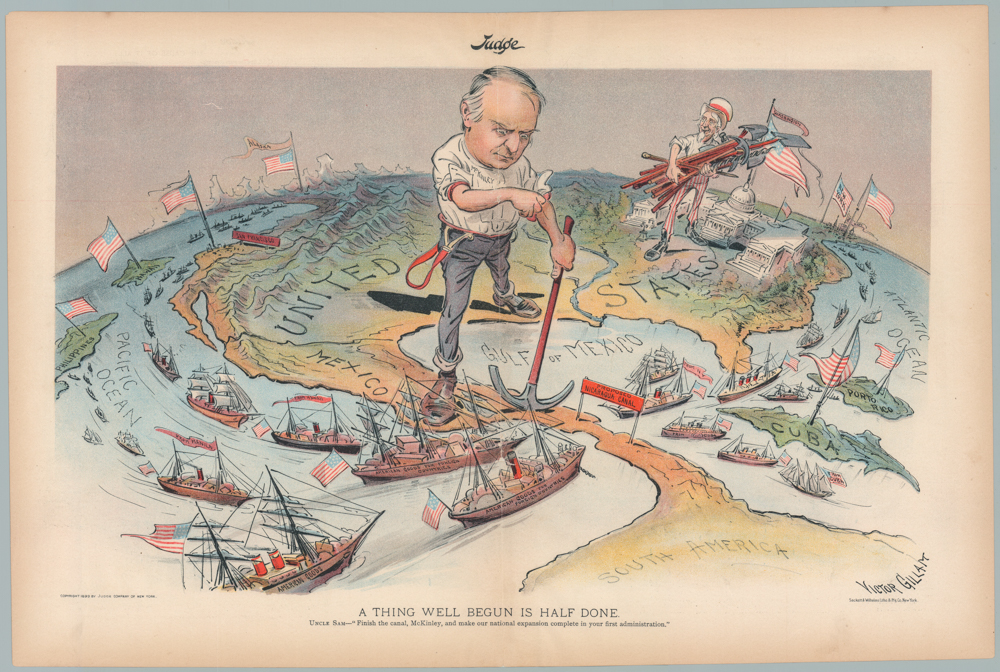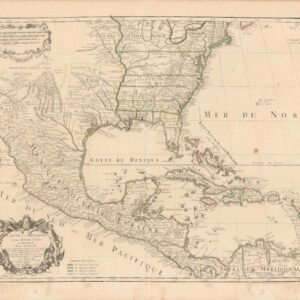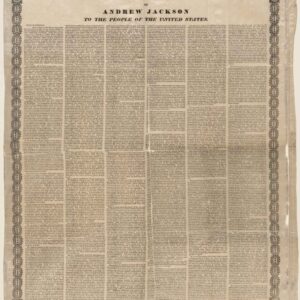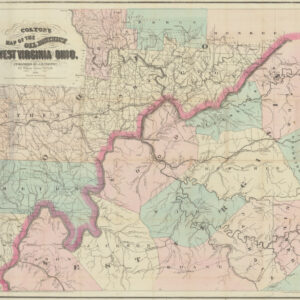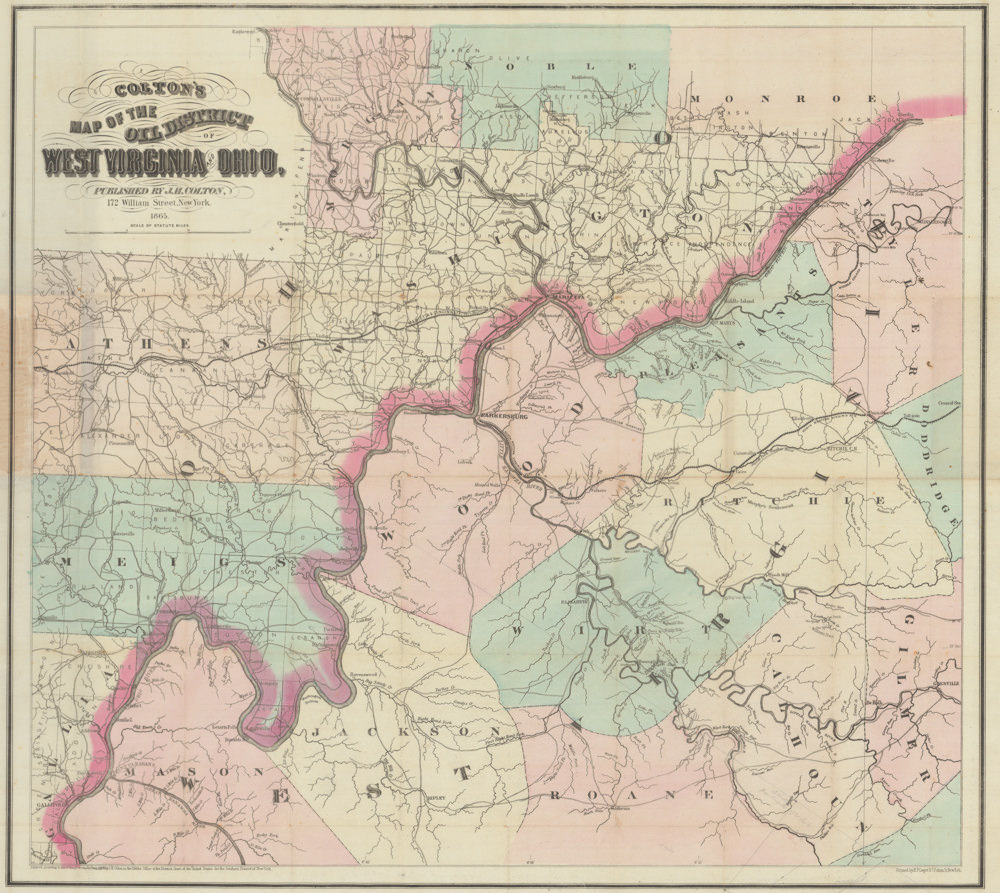One of the earliest obtainable maps to focus on Dakota Territory, and one of the first to depict its nascent counties.
Dakota Territory…1866
Out of stock
Description
Listen to a short introduction to this map:
This 1866 map of the Dakota Territories was compiled from official surveys and issued by the Department of the Interior through their General Land Office (GLO). It is one of the earliest GLO maps to focus exclusively on the Dakota Territory. Yet, in many ways it constituted an intermediary step on the long road to fully mapping out this new frontier Territory, formed in 1861. As such, it is an illuminating testament to the process by which this nation was formed (see the context section for more on the history of the Dakota Territories). The map was printed on paper, sectioned, and then backed on linen. It is a relatively large format map, measuring 20.5 x 23.5 inches (52 x 50 cm).
Running through the center of the map we find the great Missouri River, fed by all its many tributaries. Geographically, the depicted section of the river runs from the confluence of the Missouri and Yellowstone Rivers in the upper left corner (northwest) to Sioux City in the lower right corner (southeast). In the cross diagonal, the scope spans from the Black Hills in the lower left to Devils Lake and the Red River in the upper right corner of the map.
This particular map was among the first to depict actual counties in the new Dakota Territory. Located in the lower right of the map, they have been drawn up in different colors to highlight the progress. Looking more closely, there are also reminders of some of the darker chapters in U.S. history. A range of different tribes, but in particular the Sioux, had been relocated to reserves in the latter half of the 19th century, during years prior this map was compiled and used. Gradually, however, as these once peripheral lands become more attractive and valuable, the guarantees once given retained little value and the indigenous inhabitants were forcibly relocated once more, leading to decades of armed conflict between the Sioux and incoming settlers. A poignant reminder of this process is found in a label just north of the cheerfully defined counties, which clearly reads ‘INDIAN TITLE EXTINGUISHED’.
Within the county lines, and especially along the banks of the Missouri, we find the first of many settlements gradually being transformed into towns. Place names like Springfield, Bonhomme, and Yankton conjure up images of the Wild West, and indeed when this map was issued in 1866, this is exactly where we are. The Civil War was over, and the Indian Wars were only just getting started.
Context is everything
The Dakota Territories were originally incorporated into the United States under the Louisiana Purchase, the 1803 agreement in which Thomas Jefferson bought an enormous swathe of land from Napoleon. Since then, their configuration has changed considerably – especially during the steam driven 19th century.
Originally, Dakota consisted of the northernmost frontier of Greater Louisiana (as defined by the Purchase). It included large parts of the Nebraska frontier, as well as the westernmost parts of Minnesota, and the easternmost parts of what would later become the states of Idaho and Wyoming. But even immediately after the Purchase, the northernmost sections of what in 1861 would become the Dakota Territory had not yet been incorporated. It would take another 15 years before the Dakota Territory reached its full extent. This happened in 1818, when parts of St. Ruperts Land were ceded to America after agreeing that the formal border between British Canada and the U.S. should run at the 49th parallel. Prior to this, Prince Rupert Land had been under the control of the Hudson Bay Company, who had maintained commercial monopoly on the entire Hudson drainage basin until that point.
During the raucous 19th century, things changed constantly and overwhelmingly in this area of the country. It was in essence a birthing process of the contemporary United States. Most of the Dakota Territory was formed by combining lands from the Nebraska and Minnesota Territories. However, with Minnesota reaching statehood in 1858, and the Treaty of Yankton throwing out the indigenous Sioux inhabitants from these lands already the following year, the road was cleared for a more rapid process of subjugation and development.
For a long time, the Dakota Territory remained one of America’s wildest frontiers, but over time even these wild lands were brought to heel. During the 1850s and 60s, the enormous area that had been included in the Purchase was subdivided into smaller regions, forming new Territories to replace the old, and reconfiguring the formal subdivision of this new and much larger America. The formal creation of this Territory occurred in 1861, after the western regions of the Greater Nebraska Territory were ceded to Idaho and Wyoming, while the westernmost part of Minnesota now belonged to the new Territory of Dakota.
The area was not really involved in the Civil War, but was it did become one of the places where armed conflict with the Native American Tribes over land began long before the so-called Indian Wars. In 1868, the Treaty of Fort Laramie robbed the Sioux of their ancestral lands and gave these to the United States government. This sparked several decades of rapid development by settlers, spurred on by the completion of the Northern Pacific Railroad and the discovery of gold. The treaty did nevertheless ensure that further ‘modifications’ to the Indian Reserves required consent from 75% of Sioux males, which was a virtually impossible thing to achieve. After decades of struggle to evict the entire region of its native inhabitants President Grover Cleveland signed a bill in 1889 that not only divided the Dakota Territory into a northern and southern half, but converted them into formal States within the Union.
Cartographer(s):
The General Land Office (GLO) was the independent government agency in charge of public lands. Created in 1812, it took over responsibility for public domain lands from the Department of the Treasury. Hitherto, the Treasury had done a decent job of overseeing the many surveys that were needed to map the lands of the Louisiana Purchase, including those taking place in the Northwest Territory. However, as land was added to the United States at an impressive rate in the 19th century, the government needed a new agency dedicated to surveying and planning the new lands. The establishment was a huge success, and over time the GLO would become responsible for surveying, mapping, and selling most of the land west of the Mississippi (except Texas).
In 1849, the GLO came under the auspices of the Secretary of the Interior, an office created that same year. Here it stayed until the creation of the Forest Service more than half a century later (1905). This made sense, since the GLO had been the office responsible for managing forested lands that had been extracted from the public domain, but remained the property of the State.
In addition to managing and selling land, the GLO conducted large scale surveys and produced maps and plans of the areas in question. In 1946, the GLO merged with the United States Grazing Service to become the Bureau of Land Management.
Condition Description
Original outline color. Segmented and laid on linen, issued, with original outline color. Minor soiling and damp-staining.
References

